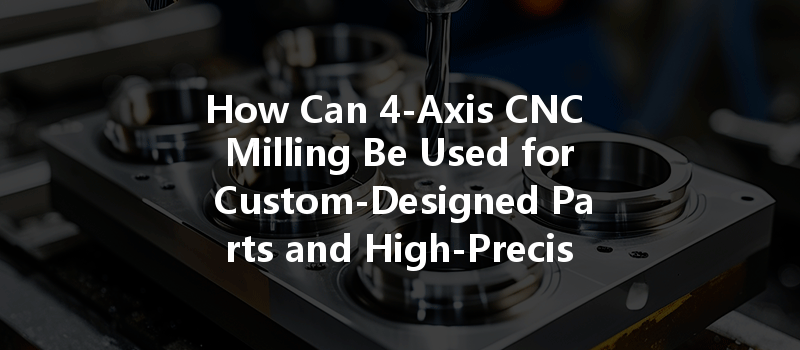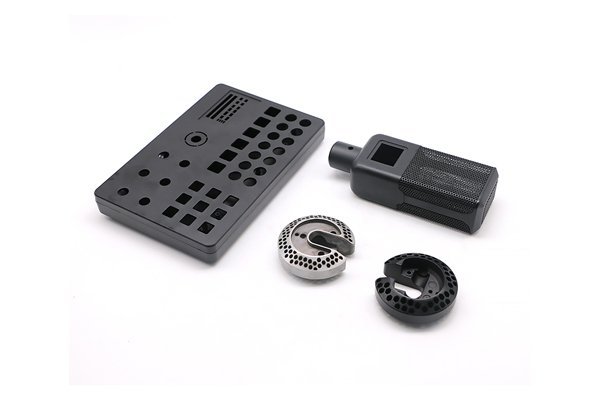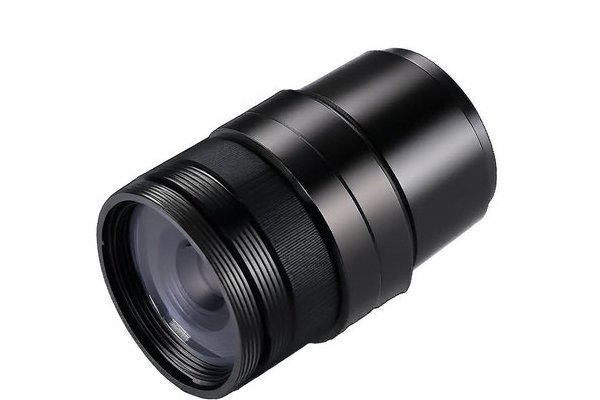: The Revolution of CNC Technology
Did you know that 3D printing is predicted to account for over 50% of engineering and design processes by 2025? This statistic illustrates the dramatic shift in manufacturing preferences towards automated processes. Among these game-changing technologies, CNC (Computer Numerical Control) machining stands out, particularly 4-axis CNC milling, which offers impressive flexibility for creating custom-designed parts and high-precision components. This blog will explore how 4-axis CNC milling is transforming industries by providing detailed insights into its processes, benefits, and applications. Whether you are a seasoned engineer or an entrepreneur navigating the manufacturing waters, understanding the power of 4-axis CNC milling could be invaluable for optimizing your production workflow.
Understanding 4-Axis CNC Milling
What is 4-Axis CNC Milling?
CNC milling is a subtractive manufacturing process where material is removed from a solid block (the workpiece) to create a desired shape. Traditional 3-axis milling allows movements along the X, Y, and Z axes, but 4-axis milling adds an additional rotational axis (commonly called the A-axis) to enable more complex designs. This added dimension allows for intricate cuts and shapes that wouldn’t be feasible with just three axes.
The Mechanics Behind 4-Axis CNC Milling
In 4-axis CNC milling, the workpiece is mounted on a rotating table that can pivot, while the milling tool can move along the X, Y, and Z axes. This configuration allows the tool to reach areas that traditional milling cannot, such as the sides and contours of a part.
4-axis CNC milling is compatible with a wide array of materials, including metals (such as aluminum, brass, and titanium), plastics, and composites, making it versatile for many industries.
The Advantages of 4-Axis CNC Milling
The capability to perform multiple operations in one setup minimizes the risk of error and enhances the accuracy of the finished product, a crucial factor for manufacturing high-precision components.
With fewer setups and tool changes required, manufacturers can save valuable hours on the production floor, leading to faster turnaround times and improved efficiency.
The added rotational axis allows for complex designs that are difficult—or even impossible—using 3-axis machines. Design engineers can create more intricate and tailored products to meet specific client needs.
Steamlining the manufacturing process often translates to reduced labor costs and fewer raw material wastes, effectively balancing the initial investment with long-term savings.
Applications of 4-Axis CNC Milling
4-axis CNC milling is exceptionally suited for producing custom-designed parts, especially in industries like aerospace, automotive, and medical devices. With unique product specifications required in these fields:
High-precision components are essential for operational effectiveness in sectors like robotics, telecommunications, and industrial machinery:

Prototyping is a significant aspect of product design and testing. With 4-axis CNC milling, rapid prototyping can become a fast, efficient, and precise process. This capability allows businesses to:
Best Practices for Successful 4-Axis CNC Milling
The first step to successful 4-axis CNC milling is investing in high-quality, reliable machinery. Precision is crucial, and advanced CNC milling machines will deliver consistent results.
Integrating Computer-Aided Design (CAD) with Computer-Aided Manufacturing (CAM) software can streamline the design and programming process, ensuring that designs translate accurately into machine instructions. Popular software solutions for CNC design include SolidWorks, AutoCAD, and Mastercam.
Selecting the right tool and optimizing cutting conditions reduces tool wear and enhances the quality of the machined parts. Pay close attention to parameters such as speed, feed rates, and the material being used.
Regularly maintenance your CNC machinery to sustain high-quality production over time. Scheduled inspections and part replacements can extend the life of your machines and upgrade overall performance.
Ensure your operators understand 4-axis CNC technology and are well-equipped to handle software and machinery. Continuous training is vital for keeping up with newer techniques and technologies.
Challenges in 4-Axis CNC Milling
Although 4-axis CNC milling offers substantial benefits, some challenges may arise, including:
Trending Innovations in 4-Axis CNC Milling
As technology evolves, so does CNC milling. Some current innovations in 4-axis CNC milling include:
In conclusion, harnessing the capabilities of 4-axis CNC milling allows businesses to innovate and produce custom-designed parts and high-precision components more efficiently. The accuracy, speed, and flexibility it offers make it an invaluable tool in various industries—from aerospace to medical devices.
Investing your time to learn about techniques and technologies surrounding 4-axis CNC milling not only empowers you to optimize your manufacturing processes but can also give you a competitive edge in today’s fast-paced market. Staying ahead of trends and innovations in this area ensures that your business remains relevant and successful.
As you consider adopting or refining your CNC milling capabilities, remember that custom-designed parts and high-precision components have become more than just a manufacturing method; they are a foundation for innovation, quality, and growth in your industry. Embrace the transformative power of 4-axis CNC milling—your manufacturing future depends on it.






